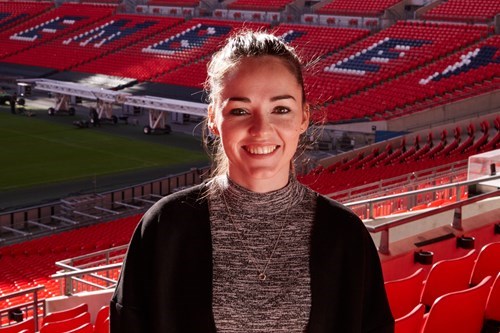BSc Sports Psychology lecturer Dr Leah Johnstone recently had an article published in the Oxford Academic online journal, entitled ‘Left-Handers Are Less Lateralized Than Right-Handers for Both Left and Right Hemispheric Functions.’ The paper demonstrates for the first time that left-handers are less controlled by one side of their brains than right-handers.
Here, she’s provided a summary of her key findings and their wider implications in sports psychology…

Most right-handers are left-hemisphere dominant for speech and language functions. It’s why more people have difficulty with speech following a stroke if the brain damage occurs in the left side of the brain rather than the right. For a long time, it was assumed left-handers had reversed brain dominance to right-handers, however, we now know that about 70% of left-handers are left-hemisphere dominant for language just like right handers. Only a small minority of left-handers show the reverse set up.
Research interested in ‘sidedness’ often finds less asymmetry in left-handed groups than right-handed groups. For example, if the right-handed group is 80% left-sided on a task, the left-handed group might be 65% left-sided too. The asymmetry runs in the same direction, but is weaker. The assumption, often stated but not tested, is that this weakened asymmetry is due to that small minority of left-handers with reversed asymmetries dragging the group average score down.
What tends not to be discussed is the possibility that those 70% of left-handers who are controlled by the left-side of the brain for language like right-handers, might actually be less asymmetrical at an individual level. That is, individual left-handers might have a weaker asymmetry than individual right-handers, even though their asymmetry is biased in the same direction.
Our research paper set out to find evidence for one or the other explanation of this reduced asymmetry. Using functional magnetic resonance imaging, they identified left-handers and right-handers who had the same lateralisation for certain functions (left hemisphere for language, right hemisphere for face and body perception), and then compared the strengths of their asymmetries. For the first time, we were able to demonstrate that when comparing left and right handers with the same brain asymmetry, the left-handers are more weakly lateralised than the right-handers. Individuals with reversed brain asymmetry were not included in the sample, therefore they cannot be the reason for the reduced average strength of asymmetry.
This result has significant implications for current models of laterality and side-preference. The way the brain is organised for those 70% of left-handers, which was thought to be ‘the same’ as that of right-handers, is not. Theoretical models of language networks mapped out in the left-hemisphere, are unlikely to apply to left-handers. The authors intend to continue these investigations to assess the overlap of current language models with relevant areas in the left and right hemisphere of this interesting participant group.
Understanding how language networks work is vitally important for the development of appropriate therapies and rehabilitation options after stroke and traumatic brain injury. In a variety of sports, left-handedness amongst players is higher than in the general population. Brain injury is also more prevalent amongst sportspeople. It is crucial that we understand the complex nature of potential language centres to ensure the most appropriate therapeutic options can be made available.

















